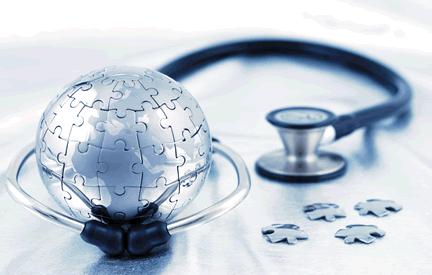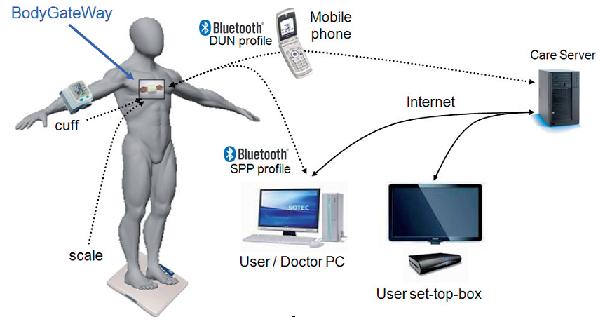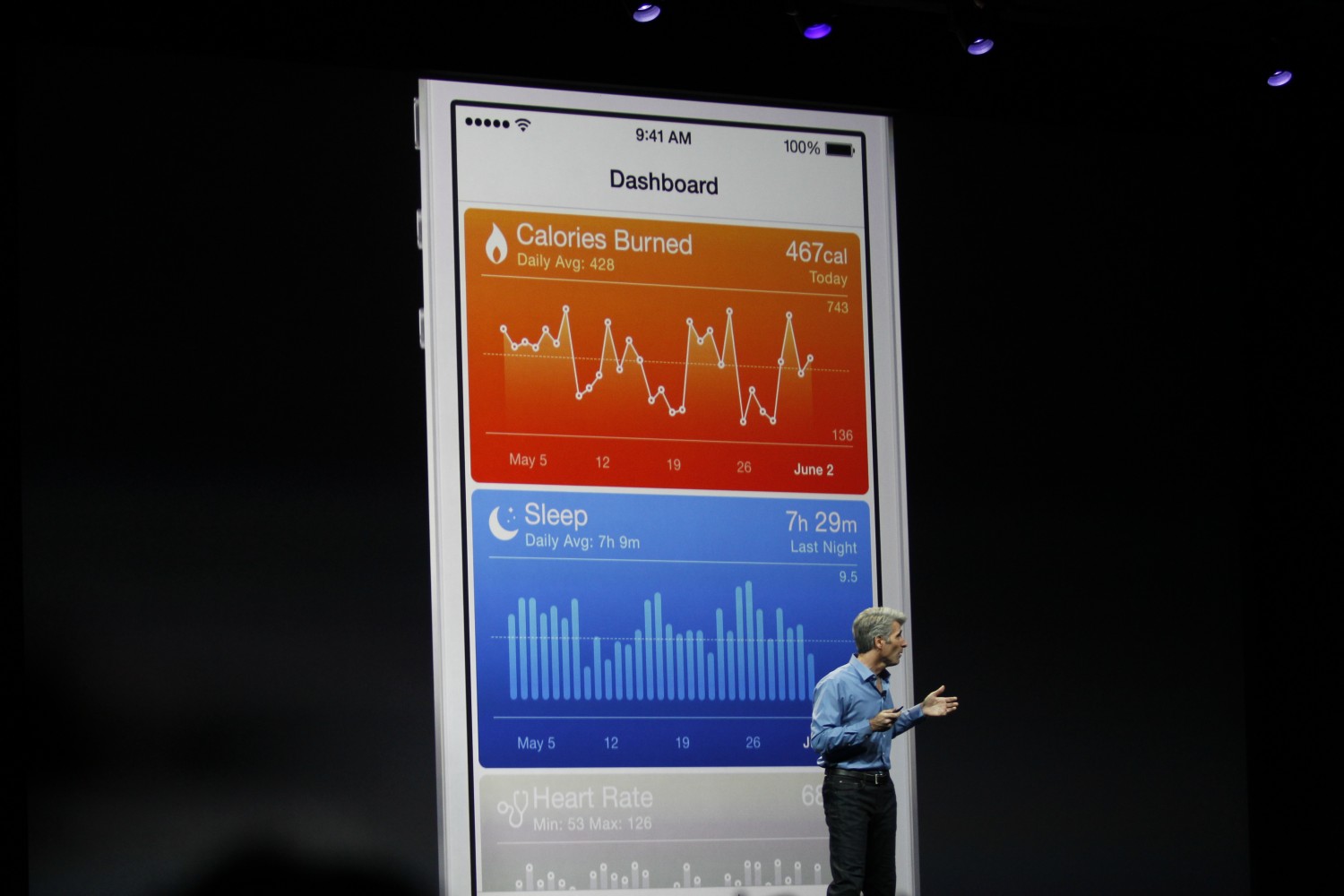The most significant announcement that Apple made in 2014 wasn’t a larger-sized iPhone. It was that Apple is entering the health-care industry. With HealthKit, it is building an iTunes-like platform for health; Apple Watch is its first medical device. Apple is, however, two steps behind Google, IBM, and hundreds of startups. They realized much earlier that medicine is becoming an information technology and that the trillion-dollar health-care market is ripe for disruption.

2015 will be the year in which tech takes baby steps in transforming medicine. The technologies that make this possible are advancing at exponential rates; their power and performance are increasing dramatically even as their prices fall and footprints shrink. The big leaps will start to happen at around the end of this decade.
 The health devices that companies such as Apple, Microsoft, and Samsung are developing are based on MEMS sensors, which are one of the exponential technologies. These enable the measurement of things such as heart rate, temperature, blood pressure, and activity levels and can feed data into cloud-based platforms such as HealthKit. They will be packaged in watches, Band-Aids, clothing—and contact lenses. Yes, Google announced in January that it is developing a contact lens that can measure glucose levels in a person’s tears and transmit these data via an antenna thinner than a human hair. In July, it said that it was licensing the technology to Novartis, enabling it to market it to people with diabetes. We will soon have sensors that monitor almost every aspect of our body’s functioning, inside and out.
The health devices that companies such as Apple, Microsoft, and Samsung are developing are based on MEMS sensors, which are one of the exponential technologies. These enable the measurement of things such as heart rate, temperature, blood pressure, and activity levels and can feed data into cloud-based platforms such as HealthKit. They will be packaged in watches, Band-Aids, clothing—and contact lenses. Yes, Google announced in January that it is developing a contact lens that can measure glucose levels in a person’s tears and transmit these data via an antenna thinner than a human hair. In July, it said that it was licensing the technology to Novartis, enabling it to market it to people with diabetes. We will soon have sensors that monitor almost every aspect of our body’s functioning, inside and out.
Advances in Microfluidics are making possible the types of comprehensive, inexpensive diagnostics that in a single drop of blood, it can test for things such as cancer, cholesterol, and cocaine. Newer technologies coming from Nano biophysics like Gene-Radar, a portable nanotechnology platform that uses biological nanomachines to rapidly and accurately detect the genetic fingerprints of organisms. It will enable the detection of diseases such as HIV and Ebola and deliver the results to a mobile device within minutes—for a hundredth of the cost of conventional tests. By combining these data with EMR (Electronic Medical Records) and the activity and lifestyle information that our smartphones observe, Artificial Intelligence-based systems will monitor us on a 24 x 7 basis. They will warn us when we are about to get sick and advise us on what medications we should take and how we should improve our lifestyle and habits.
 With the added sensors and the apps that tech companies will build, our smartphone will become a medical device akin to the Star Trek tricorder. With health data from millions of patients, technology companies will be able to take on and transform the pharmaceutical industry—which works on limited clinical-trial data and sometimes chooses to ignore information that does not suit it. These data can be used to accurately analyze what medications patients have taken, to determine which of them truly had a positive effect; which simply created adverse reactions and new ailments; and which did both.
With the added sensors and the apps that tech companies will build, our smartphone will become a medical device akin to the Star Trek tricorder. With health data from millions of patients, technology companies will be able to take on and transform the pharmaceutical industry—which works on limited clinical-trial data and sometimes chooses to ignore information that does not suit it. These data can be used to accurately analyze what medications patients have taken, to determine which of them truly had a positive effect; which simply created adverse reactions and new ailments; and which did both.
 And then there is the genomics revolution. The cost of sequencing a human genome has fallen from $100 million in 2001 to about $1000 today and will likely cost as much as a blood test by the end of this decade. What this means is that the bits and bytes that make up a human being have been deciphered; for all intents and purposes, we have become software.
And then there is the genomics revolution. The cost of sequencing a human genome has fallen from $100 million in 2001 to about $1000 today and will likely cost as much as a blood test by the end of this decade. What this means is that the bits and bytes that make up a human being have been deciphered; for all intents and purposes, we have become software.
2014 marked an inflection point in the technology curve for medicine. It isn’t yet clear which technology advances will indeed affect humanity and which will be nothing more than cool science experiments. What is clear is that we have entered an era of acceleration and that there is much promise and peril ahead.

2015 will be the year in which tech takes baby steps in transforming medicine. The technologies that make this possible are advancing at exponential rates; their power and performance are increasing dramatically even as their prices fall and footprints shrink. The big leaps will start to happen at around the end of this decade.
 The health devices that companies such as Apple, Microsoft, and Samsung are developing are based on MEMS sensors, which are one of the exponential technologies. These enable the measurement of things such as heart rate, temperature, blood pressure, and activity levels and can feed data into cloud-based platforms such as HealthKit. They will be packaged in watches, Band-Aids, clothing—and contact lenses. Yes, Google announced in January that it is developing a contact lens that can measure glucose levels in a person’s tears and transmit these data via an antenna thinner than a human hair. In July, it said that it was licensing the technology to Novartis, enabling it to market it to people with diabetes. We will soon have sensors that monitor almost every aspect of our body’s functioning, inside and out.
The health devices that companies such as Apple, Microsoft, and Samsung are developing are based on MEMS sensors, which are one of the exponential technologies. These enable the measurement of things such as heart rate, temperature, blood pressure, and activity levels and can feed data into cloud-based platforms such as HealthKit. They will be packaged in watches, Band-Aids, clothing—and contact lenses. Yes, Google announced in January that it is developing a contact lens that can measure glucose levels in a person’s tears and transmit these data via an antenna thinner than a human hair. In July, it said that it was licensing the technology to Novartis, enabling it to market it to people with diabetes. We will soon have sensors that monitor almost every aspect of our body’s functioning, inside and out.Advances in Microfluidics are making possible the types of comprehensive, inexpensive diagnostics that in a single drop of blood, it can test for things such as cancer, cholesterol, and cocaine. Newer technologies coming from Nano biophysics like Gene-Radar, a portable nanotechnology platform that uses biological nanomachines to rapidly and accurately detect the genetic fingerprints of organisms. It will enable the detection of diseases such as HIV and Ebola and deliver the results to a mobile device within minutes—for a hundredth of the cost of conventional tests. By combining these data with EMR (Electronic Medical Records) and the activity and lifestyle information that our smartphones observe, Artificial Intelligence-based systems will monitor us on a 24 x 7 basis. They will warn us when we are about to get sick and advise us on what medications we should take and how we should improve our lifestyle and habits.
 With the added sensors and the apps that tech companies will build, our smartphone will become a medical device akin to the Star Trek tricorder. With health data from millions of patients, technology companies will be able to take on and transform the pharmaceutical industry—which works on limited clinical-trial data and sometimes chooses to ignore information that does not suit it. These data can be used to accurately analyze what medications patients have taken, to determine which of them truly had a positive effect; which simply created adverse reactions and new ailments; and which did both.
With the added sensors and the apps that tech companies will build, our smartphone will become a medical device akin to the Star Trek tricorder. With health data from millions of patients, technology companies will be able to take on and transform the pharmaceutical industry—which works on limited clinical-trial data and sometimes chooses to ignore information that does not suit it. These data can be used to accurately analyze what medications patients have taken, to determine which of them truly had a positive effect; which simply created adverse reactions and new ailments; and which did both. And then there is the genomics revolution. The cost of sequencing a human genome has fallen from $100 million in 2001 to about $1000 today and will likely cost as much as a blood test by the end of this decade. What this means is that the bits and bytes that make up a human being have been deciphered; for all intents and purposes, we have become software.
And then there is the genomics revolution. The cost of sequencing a human genome has fallen from $100 million in 2001 to about $1000 today and will likely cost as much as a blood test by the end of this decade. What this means is that the bits and bytes that make up a human being have been deciphered; for all intents and purposes, we have become software.2014 marked an inflection point in the technology curve for medicine. It isn’t yet clear which technology advances will indeed affect humanity and which will be nothing more than cool science experiments. What is clear is that we have entered an era of acceleration and that there is much promise and peril ahead.

